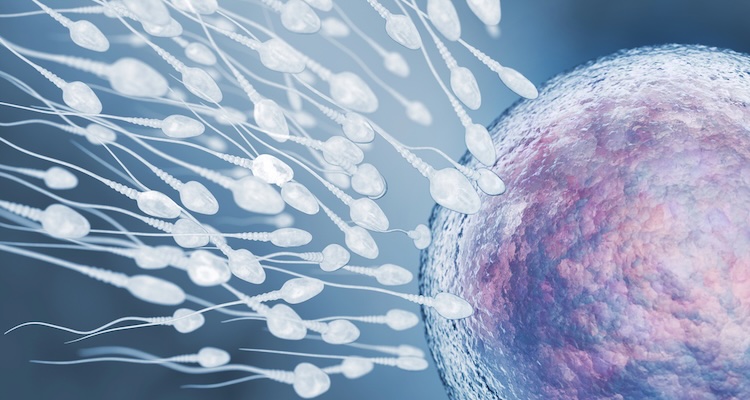Hot Times Ahead: Tomorrow’s Male Contraceptives May Be More About Temperature, Less About Drugs
Scientists learn how to use heat to decrease sperm mobility rates

According to their Nature Communications study, a team of researchers from the Washington University School of Medicine’s Cell Biology and Physiology Department have discovered why sperm cells are noticeably less or more active depending on how cool or warm their immediate environment is.
Polina V. Lishko, one of the study’s authors, told Popular Science, “Everyone knew that male reproductive organs are maintained at a temperature lower than the core body temperature, but the reason why this is necessary wasn’t clearly understood—until now.”
Armed with this knowledge, someday, it may be possible to adjust a penis-equipped person’s fertility rate without the use of hormone-based medications, chemical sperm blockers, or other contraceptive technologies currently under development.
A matter of degrees
Previously, scientists didn’t fully understand what activated a sperm cell’s CatSper protein, the driving mechanism behind its propelling flagella.
Initially, it was thought that the recipient’s vaginal pH levels might increase sperm speed, but further research, notably that sperm doesn’t respond to progesterone, led the Washington University team to explore the effects of temperature.
RECOMMENDED READ: Good for What Ails Us? Broad Spectrum Morning-After STI Pill Shows Promise
Though temperature and sperm mobility are well documented, the Washington University researchers were able to pinpoint what temperature would kick sperm into fertility overdrive.
Employing equipment normally used to study cranial nerves, the team discovered a distinctive CatSper response when the sperms’ environment rose above 100.4 degrees.
Is it hot in here, or is it just me?
By determining precisely how temperature affects, it should be possible to formulate a generally reliable method to ensure fertility or decrease it.
An added benefit to this approach is it’s only necessary to heat or cool the testicles and not a person’s entire body.
We reported a somewhat similar approach four years ago when the COSO Testicle Bath was the recipient of a German Dyson Award. The COSO is essentially a small tub that employs a combination of heated water and ultrasonic waves to suspend sperm mobility temporarily.
Good for one thing, less so for others
It’s always worth mentioning that while existing devices like the COSO or practical applications of the Washington University research may help reduce unwanted pregnancies, vasectomies and condoms already prevent pregnancies, and condoms have the additional advantage of helping to prevent the spread of life-threatening Sexually Transmitted Infections (STIs) such as hepatitis and HIV.
Not discounting the potential benefits of a new and effective male-identified contraceptive technology, it’s important to remember it also might create as many problems as it solves.
For example, it could cause users to develop a false sense of security, mistakenly believing that just because they’re unlikely to impregnate someone inadvertently, then sex is now risk-free.
Gimmie steam
But do we really need a penis-equipped contraceptive and STI preventative, even if it’s a high-tech combination of temperature regulator and barrier protection?
As exciting as that may sound, the truth is the ongoing search for the penis-equipped solution to these problems might actually be unnecessary.
While some penis-equipped people may not like wearing them, condoms are a mostly reliable way to prevent unwanted pregnancies and infectious diseases.
Condoms might not be high-tech, but they don’t require batteries, a prescription, extensive training in how to use them, or even that much money.
Plus, they come in any size, shape, length, and girth, with or without ribs; a bevy of different colors, flavors, and lubricant styles you need or want—and, not only that, but also for nearly every type of sexual activity imaginable. As long as they don’t break, they will do their job.
The Washington University team’s work and other research to improve or diminish fertility rates is commendable. But so are the sexual health experts, organizations like Planned Parenthood, and sex information resources the world over, working night and day to get people to take sex seriously.
No less so by taking personal responsibility for sexual health and pregnancy prevention by using condoms!
Image Sources: Depositphotos

















